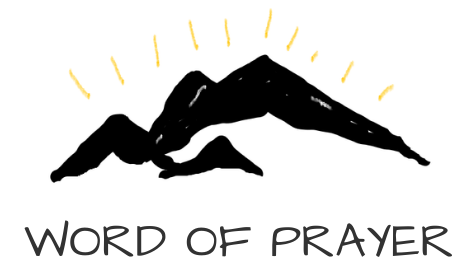
The story of Jesus is unique and attractive. For anyone who has only heard about Jesus from media or second-hand conversations in the culture, the experience of reading one (or more) of the gospels for yourself is a distinct and delightful experience. Jesus is a challenging figure, and his words and actions challenge any reader to really consider who he is and what he’s saying. A first time reader often finds an encounter with Jesus in the gospel fresh and different from what they were expecting.
What about Christians who are familiar with the story of Jesus and who find the gospels less of a surprise and more of a puzzle when it comes to understanding some of the details? In addition to reading the gospels, I encourage people (Christians and others) to consider the practice of reflective reading and praying the gospel.
Mark among the Four Gospels
The four gospels of the New Testament–Matthew, Mark, Luke and John–tell the story of Jesus but not like standard biographies. Each book has it’s own distinct emphasis, and the first three have a good deal of material in common. They are similar enough that scholars call them the synoptic gospels, which means they can be “seen together”. In contrast, the gospel of John has a different and distinct way of telling the Jesus story unlike the other three.
While Mark is like the two gospels of Matthew and Luke, it is the shortest of all four of the gospel accounts of Jesus. Why is this so? For one thing, Mark records less of the actual words that Jesus taught. Instead he portrays Jesus as a man of action who moves at a breath-taking pace, driving out demons, teaching and attracting crowds as well as opposition from the religious leaders of his day.
Mark’s gospel keeps asking about Jesus “Who is this?”
Mark’s gospel also heightens the focus on Jesus’ identity, with the first half returning to the question “Who is this?” over and over. The second half explores the nature of Jesus as a wholly different kind of king who comes to serve people and sacrifice himself for mankind, not to conquer and rule.
The Amazing Gospel
Even though Mark is short and action-packed, I’ve noticed something from reading this book repeatedly, something that scholars don’t usually point out. Mark uses a large number of emotion words in his story. In reading the Greek text, I count about 125 words in his story that are emotion-laden. For the shortest gospel, this is notable because he uses comparatively more emotion words than the other writers.
Mark uses a large number of emotion words in his story
Words having to do with “fear” or being afraid come up frequently, especially in the first part of the story and at the very end (about 10% of his emotion words). Anger is less common while sadness shows up more in the second half of the story as the action leads up to the execution of Jesus upon a Roman cross. The most common emotion that Mark highlights is surprise, especially amazement. There are eight different expressions for amazement or being astounded in Greek in the New Testament, and Mark uses all eight of them. In fact, for three of these expressions he is the only writer who uses those particular words. “Amazement” makes up about 1 of every 5 of Mark’s emotion words.
How to Pray Mark's Gospel
In an early episode of First Fifteen podcast I showed how Mark’s gospel makes a very good beginning or introduction to Jesus’ message of God’s kingdom coming. You can listen to that episode here and follow that stream of thought in your own reading and praying through Mark’s gospel.
Another way to read and pray this gospel is to pay special attention to Mark’s emotion words and especially to expressions of amazement, surprise or astonishment. Let yourself be surprise, amazed and astonished as well. Notice who is having the reaction and ask why. To get you started, pay attention to Mark 1:22, 2:12, 5:42 and 6:6. I skipped some occurrences of “amazement” in the text to steer you to different people’s reaction of surprise. There are about 25 places that I found where surprise, amazement or astonishment is shown.
A third way to pray through Mark’s gospel is to look out for the two-fold division of the entire book. In the first half, from Mark 1-8 pay close attention to different demonstrations and claims about who Jesus is. Notice how Jesus works to silence the demons and to keep his true identity a mystery from the masses. In the last half, in Mark 9-16 notice how Jesus reveals himself to his followers and eventually to others as his life-path leads to the cross and his identity as the servant-King comes into focus rather than a warring messiah/deliverer or political agitator like Judas or Barabbas.
I hope these suggestions for praying Mark’s gospel are helpful to you. I would like to hear what you discover from your own reading or whether you found this article helpful. Leave us a comment below or connect with us through our social channels at the top of the page.
Ron Oltmanns is one of the co-founders of Word-of-prayer.com and is the primary teacher. His desire is to help people read and pray the Scriptures and connect personally with God through them.

